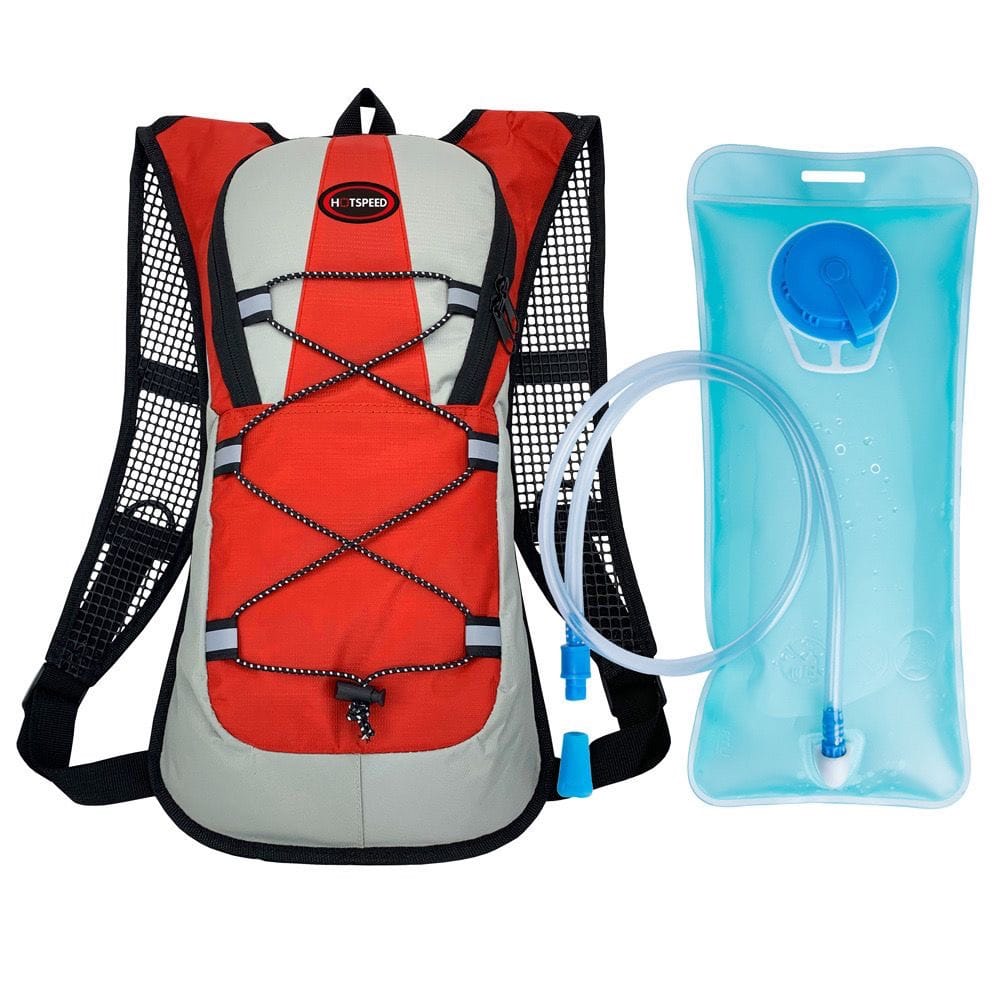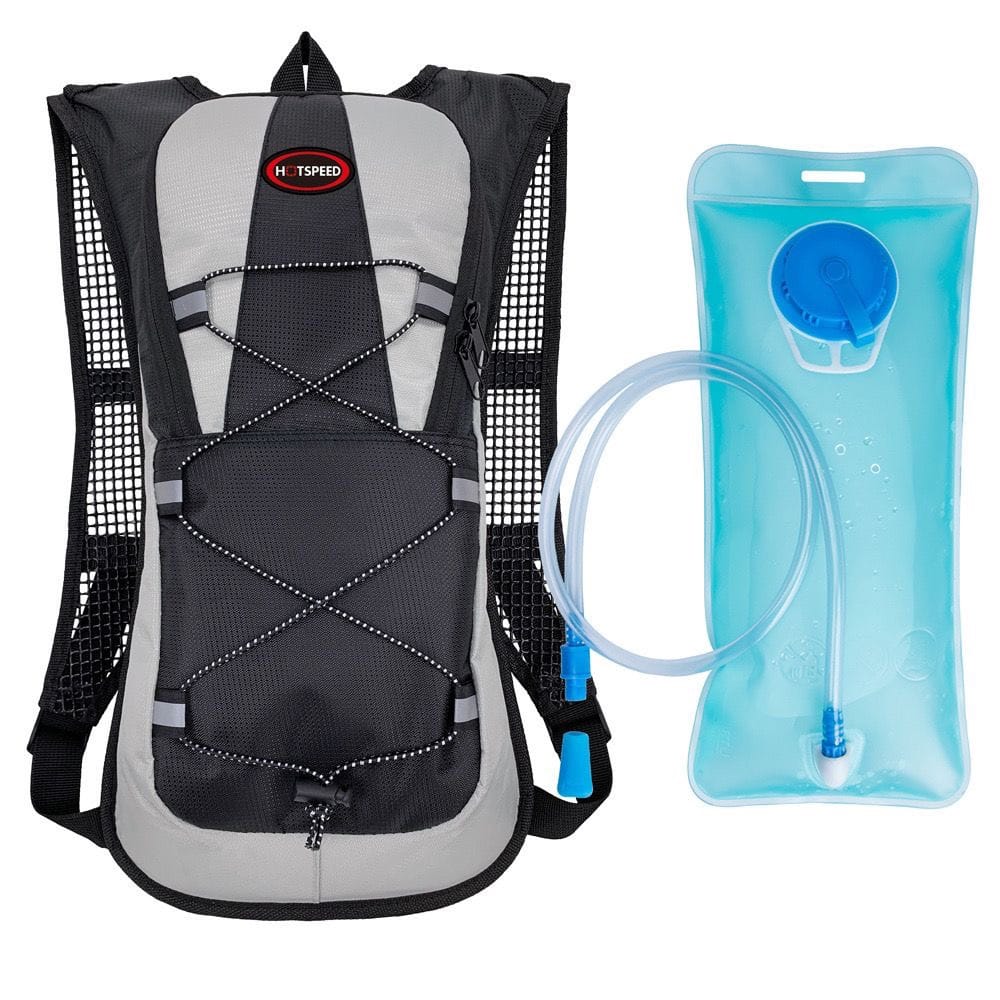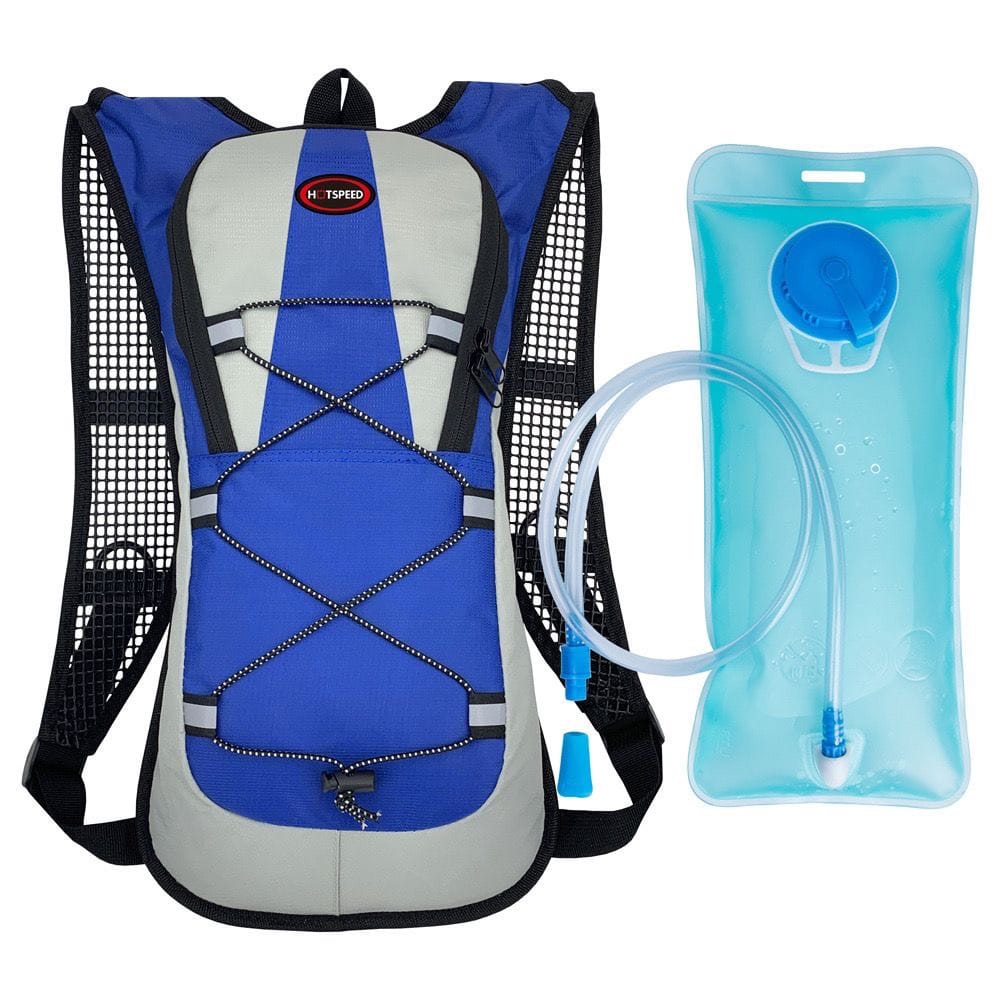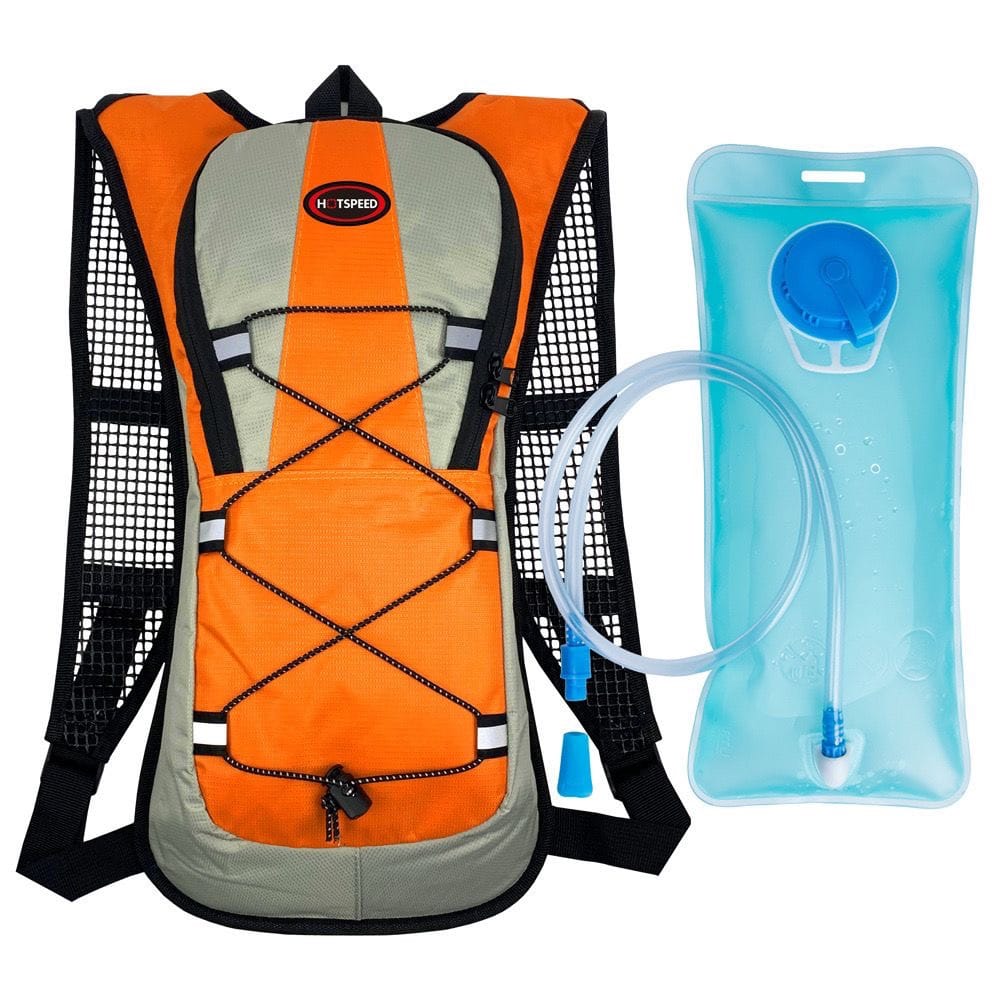As someone who’s passionate about outdoor running, I know firsthand how much the right gear can transform your experience. Especially during long-distance trail runs or scorching summer days, a solid piece of equipment doesn’t just boost comfort—it helps me go farther and stay safe. Over the past few years, my hydration backpack has become a non-negotiable part of my kit. Before every run, it’s the first thing I check off my list. Today, I want to share the five biggest benefits of hydration backpacks and why they might just be the game-changer you need if you’re on the fence about getting one or unsure how to pick the right one.

What’s a Hydration Backpack, Anyway?
In simple terms, a hydration backpack is a lightweight pack designed for outdoor activities, featuring a soft water bladder (usually 1-3 liters) connected to a drinking tube that runs to the shoulder straps. Sip on the go—no hands required. Unlike traditional water bottles or handheld cups, it’s perfect for sports like running, hiking, or cycling, where keeping your hands free is a must.
I first stumbled across hydration backpacks three years ago during a trail run. It was a 20-mile slog in brutal heat, and lugging a water bottle by hand left me exhausted. A friend recommended a Salomon hydration pack, and after one try, I was hooked. Since then, I’ve geeked out over their features, tested different brands, and realized they solve so many real-world problems for outdoor runners like me.
The 5 Big Wins of Hydration Backpacks
1. Hands-Free Hydration, Anytime
When you’re pounding the trails—especially on long runs—staying hydrated is non-negotiable. I used to carry a handheld bottle, and while it got the job done, my wrist would ache after a while, and stopping to drink threw off my rhythm. With a hydration backpack, the tube’s right by my mouth. I sip whenever I want without breaking stride.
I’ll never forget this one mountain run—30 miles, sparse aid stations, blazing sun. My hydration pack let me drink on the move, saving energy and keeping me in the zone. That peace of mind? Priceless.

2. Big Capacity for Long Hauls
Hydration backpacks typically hold 1-3 liters of water—way more than your average 16-ounce bottle. For runs stretching beyond three hours, that’s a lifesaver. Plus, most packs come with extra pockets. I can stash my phone, energy gels, or even a lightweight jacket for whatever the weather throws at me.
One time, I ran across the Gobi Desert, where conditions flipped from hot to stormy in a flash. With 2 liters of water and some snacks tucked in my pack, I stayed self-sufficient and unruffled the whole way.
3. Snug Fit That Stays Put
There’s nothing worse than a backpack bouncing around mid-run—especially on steep climbs or descents when it feels like it’s pulling you off balance. Hydration packs are built to hug your body, with adjustable shoulder and chest straps that lock them in place. Think of it like wearing a fitted vest. Brands like CamelBak and Salomon nail this with curved designs that mold to your back. I barely notice mine when I’m running.
Just the other week, I did a night run on tricky terrain. The downhill stretches were brutal, but my pack stayed rock-solid—probably saved me from a faceplant or two.
4. Breathable Comfort, Even in Heat
Some folks worry a backpack will leave them sweaty and miserable, but modern designs have cracked that code. My go-to pack has a mesh back panel that lets air flow freely. Even on a 95°F summer day, I don’t end up with a soaked shirt. Bonus: the cool water in the bladder acts like a mini AC against my back, making it more comfortable than running without one.
Last summer, I ran a half marathon alongside a buddy using a regular backpack. He finished with a drenched back; mine stayed dry and breezy. The difference was night and day.

5. Versatility Beyond Running
Hydration backpacks aren’t just for pounding pavement or trails. I’ve taken mine hiking, biking, and even on short weekend trips. The lightweight build and smart pocket layouts make it a jack-of-all-trades. Once, on a hiking trip, I loaded it with water, a camera, and snacks—perfect for snapping pics and refueling on the fly.
Recently, I joined a 25-mile bike ride. My hydration pack held its own against fancy cycling gear, proving it’s a budget-friendly all-rounder.
Hydration Backpacks vs. Other Options: A Quick Comparison
To give you a clearer picture, I put together a table comparing hydration backpacks to handheld bottles and waist belts:
| Hydration Method | Capacity | Convenience | Stability | Best For | Pros & Cons |
|---|---|---|---|---|---|
| Hydration Backpack | 1-3 liters | High (hands-free) | High (snug fit) | Long runs, trails, hikes | Pros: Big capacity, comfy; Cons: Pricier |
| Handheld Bottle | 10-25 oz | Medium (handheld) | Medium (wrist fatigue) | Short runs, training | Pros: Simple, light; Cons: Small capacity |
| Waist Belt + Bottle | 16-32 oz | Medium (waist load) | Medium (bounces) | Mid-distance, light hikes | Pros: Compact; Cons: Waist discomfort |
The takeaway? Hydration backpacks shine for long-distance runs and rugged terrain. If that’s your jam, they’re tough to beat.
How to Pick the Right Hydration Backpack
So, how do you choose one that fits you? Here’s what I’ve learned from trial and error:
Capacity: For short runs (under 6 miles), 1 liter works. For long hauls or trails, go for 2 liters or more.
Fit: Test it on and tweak the straps. It shouldn’t budge when you run. I love packs with stretchy straps—comfy and adaptable.
Material: Look for breathable fabrics and durability. A ventilated back panel is a must for hot days.
Tube Design: The mouthpiece should be easy to use. Some have on/off valves to prevent leaks—super handy.
Brands: CamelBak, Salomon, and Osprey are my go-tos. They’re not cheap, but the quality holds up.
Right now, I’m rocking a Salomon ADV Skin 12—2 liters, plus handy pockets I can reach mid-run. It wasn’t cheap, but two years in, it’s worth every penny.

My Real-Life Take: A Runner’s Tale
Enough specs—let me tell you how it feels in action. Last year, I tackled a 50K trail race and brought a new hydration pack along. The weather was wild—sunny and hot in the morning, rainy by afternoon. I loaded up 2 liters of water, some gels, and a rain jacket, skipping aid stations entirely.
By the back half, my legs were toast, but every sip of water revived me. Nine hours later, crossing the finish line felt unreal. That pack was like a trusty sidekick, quietly keeping me going.
It’s not perfect, though. Cleaning the bladder takes effort–I’ve got a trick: soak it with warm water and a bit of baking soda, scrub with a brush, and air dry. Skip the hot water, or you’ll warp the plastic.

So, Should You Get One?
For me, a hydration backpack is a must-have for outdoor running. The easy hydration, comfort, and versatility make every mile smoother and more fun. It won’t make you faster, but it’ll keep you going longer with less stress. If you’re into running—or eyeing a bigger challenge—give it a shot. You might just wonder how you ever ran without it.
Q&A: Your Questions, Answered
Q1: Aren’t hydration backpacks too heavy for running?
A: Not really. Most weigh 7-14 ounces empty—add 2 liters of water, and you’re at about 4-5 pounds. Pick a snug fit, and it won’t feel like much.
Q2: Does the water last long enough, or do I need to refill?
A: Depends on distance and heat. Two liters covers 3-4 hours for me. For longer runs or hot days, I bring a collapsible cup to top off at streams or stations.
Q3: Is cleaning a hassle? Any tips?
A: It takes a little effort. I soak mine with warm water and baking soda, brush it out, and let it dry fully. Easy once you get the hang of it.
Q4: What if it bounces while I run?
A: Adjust the straps—shoulder and chest—until it’s tight. Test it with a few strides. Still loose? Try a different model.
Q5: Good for beginners?
A: Absolutely! It’s simple to use and makes hydration a breeze—perfect for newbies. I started with one and never looked back.